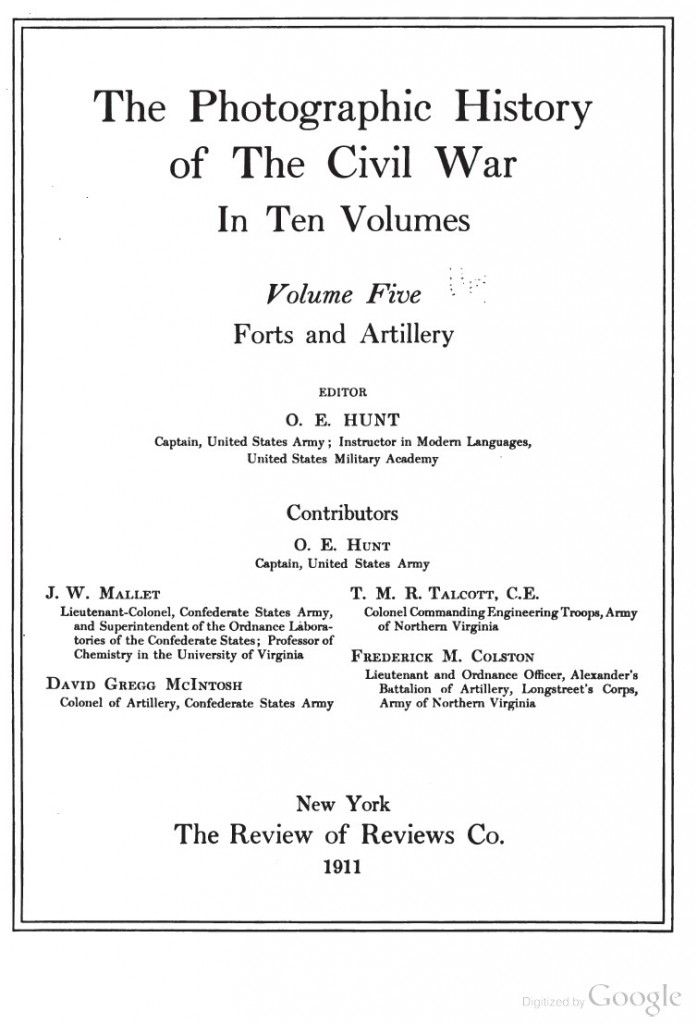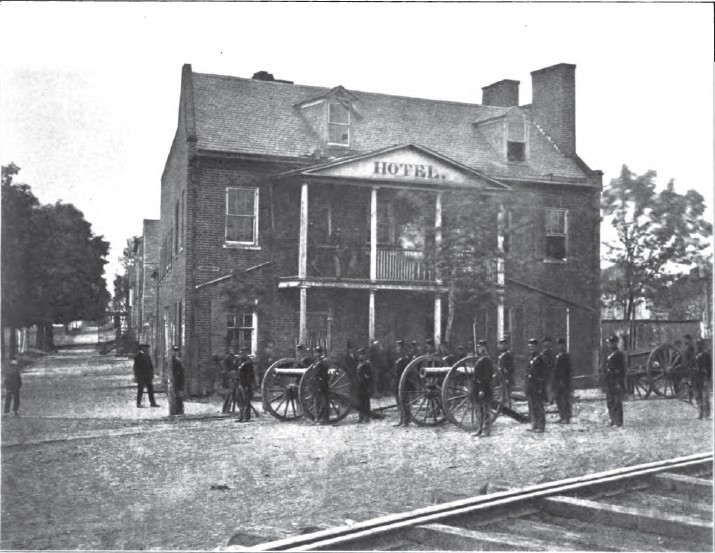Forts and Artillery
Posted By Norman Gasbarro on February 4, 2011
(Part 6 of 12). Contents of Volume V of The Photographic History of the Civil War: Forts and Artillery.
The year 1911 was the 50th anniversary of the beginning of the Civil War. In a memorial to the war, a ten volume set of books was published entitled The Photographic History of the Civil War. This series attempted, through photographs, to do what no other books had previously done – to bring the war close and personal through previously unpublished and unavailable photographs. The series was edited by Francis Trevelyan Miller.
This post is part 6 of a 12 part series and will focus on the contents of Volume V, Forts and Artillery.
Contents of Volume V of The Photographic History of the Civil War.
“The Federal Artillery and Artillerymen,” O. E. Hunt. “The Confederate Artillery – Its Organization and Development,” David Gregg McIntosh. “Memories of Gettysburg,” Frederick M. Colston. “Defending the National Capital,” O. E. Hunt. “The Defenses of Charleston.” “The Ordnance Department of the Federal Army,” O. E. Hunt. “The Ordnance of the Confederacy,” J. W. Mallet and O. E. Hunt. “The Ammunition Used in the War,” O. E. Hunt. “Entrenchments and Fortifications,” O. E. Hunt. “Engineer Corps of the Federal Army,” O. E. Hunt. “Reminiscences of the Confederate Engineer Service,” T. M. R. Talcott. “Federal Military Railroads,” O. E. Hunt. “Defending the Citadel of the Confederacy,” O. E. Hunt.
The following men from the Lykens Valley area have already been identified in the Civil War Research Project as part of Pennsylvania artillery regiments:
1st Pennsylvania Artillery: Andrew H. Hyte
2nd Pennsylvania Artillery: Abraham L. Boyer —Abraham F. Fairchild —John Wesley Pike — Joseph R. Zeiter
3rd Pennsylvania Artillery: William Anderson — John B. Armstrong —Conrad Caslow —John Davis —Henry Gessner — Henry Helt —William Blackstone Hoffman —George Long —John D. Messner —Lorenzo Michaels —Frank Patrick — Jonathan “John” Powell —John Alred Salen —Adam M. Snyder — Peter G. Starr —George Nicholas Stier —Henry Walborn —Simon Wolf
5th Pennsylvania Artillery: Alexander Day
6th Pennsylvania Artillery: Henry Miller
There are probably many others. And, very little is known about most of the men who have thus far been identified. This volume in the Photographic History will shed some light on specifically what the artillery units were responsible for and how they performed during the war.
The picture below shows some of the “instructional” material in this volume. The cannon shown are “12-pounder Napoleon field-guns.”
In drill, the soldiers are in “correct position” for action. The duty of the soldiers with long swabs (right) is to sponge them out and “ram home the new charge.” The men on the left (near the muzzle) place the charge in the gun. The men on the right (back of the wheel) cover the vents until the charge is rammed home. The men on the left (back of the wheel) prick the cartridge, insert a friction primer attached to a lanyard, step back, and wait for the order to “fire.” At the order, they explode the primer. The sergeants stand still further to the left and they are the “chiefs of pieces.” The men behind the limbers cut the fuses for the length of time required and insert them into the shell. The men at the left carry the charge from the limber and deliver it to the loaders who put it in the gun. The corporals behind the cannon are the men who sight the piece. The others help with whatever is needed and replace any men who are disabled.
For a free download from Google Books, click here and select “PDF” in the upper right corner of the page. When the “PDF” file opens in your reader, save the file to disk. Use of the file is subject to restrictions that are spelled out on the first page of the PDF. Essentially, the restrictions specify that the digital book may be used for personal, non-profit use only and that the Google Books “watermark” should not be removed from the pages.
Monday, part 7 of this series will examine Volume VI, The Navies.
 ;
;




Comments